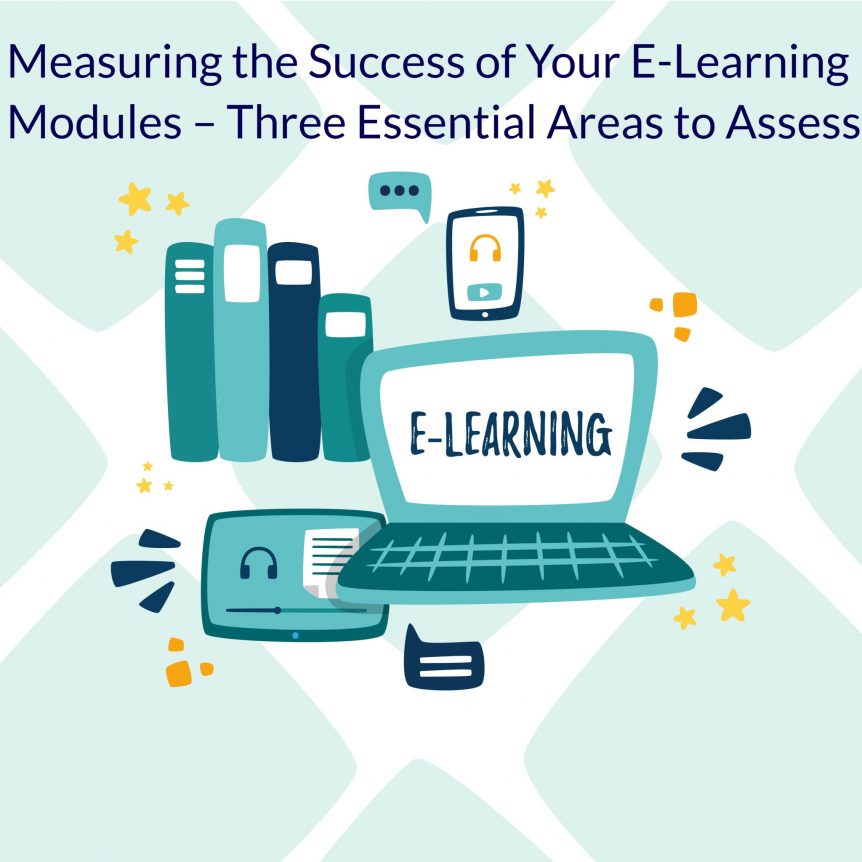Measuring the Success of Your E-Learning Modules – Three Essential Areas to Assess
Measuring the success of e-learning courses – or any type of course you deliver – is a complex topic. One of the reasons for this is there are so many variables you need to consider.
For example, if the goal of your e-learning module is to increase sales, you could measure success by analysing sales figures before and after learners complete the course. After all, this may give you an indication of the success of the course (taking into account other factors which could also impact sales).
However, measuring raw information like this doesn’t tell you where you can make improvements to get even better results.
The Complexities of Measuring Training Success
Measuring the success of a sales-related course is one of the easier examples of measuring success. What about a more complex area, like training to reduce accident rates? Does the absence of something (i.e. accidents) really mean your training course was a success? Maybe, but the figures themselves are unlikely to be enough to come to that conclusion.
What about training that is harder to measure objectively. Training on topics like quality, communication, and leadership skills requires a much more subjective analysis of success. How can you do this?
The conclusion is there are no easy solutions to measuring the success of your e-learning modules. Instead, you should look at multiple data and information sources to get an overall view.
Kirkpatrick Model of Training Evaluation
A good reference point to consider when looking at measuring e-learning success is the Kirkpatrick model of training evaluation. It was developed in the 1950s by Dr Donald Kirkpatrick, an American university professor. In other words, it’s a tool for evaluating training success that existed long before the emergence of e-learning.
However, it still has relevance today. Specifically, it gives you a holistic view using multiple data points, as mentioned above.The Kirkpatrick Model of Training Evaluation has four levels:
- Reaction – level one looks at the reaction of learners to the course. In other words, did learners view the experience as being positive, did they enjoy completing the course, did they find it was useful and worth their time?
- Learning – the second level focuses on what was learned, what was not learned, and what was retained post-completion. Much of this information comes from quizzes both within the e-learning training module and any assessments you conduct post-completion.
- Behavioural change – the third level looks at whether or not learners applied what they learned to their day-to-day experience. Specifically, it looks at whether the training resulted in behavioural change and/or performance improvements. This analysis can be objective with statistics and figures or subjective using observation and management assessments.
- Business impact – the fourth and final level considers tangible results that demonstrate the impact of the training on your business. Examples include everything from increased sales and profitability to improved productivity, reduced risk, and enhanced product quality.
The Importance of Measuring E-Learning Success
The objective of measuring your e-learning modules is to demonstrate success and return on investment. That said, there are other advantages to measuring the success of your e-learning courses:
- Measuring success is also essential to ensure you continually improve the training modules and programmes you create
- You’ll also have a better understanding of the opinions of learners and how those opinions impact your training programme
The Three Essential Areas to Measure E-Learning Success
With the above in mind, there are three core areas you should look at when measuring e-learning success, keeping in mind the Kirkpatrick Model for Training Evaluation. Those three core areas are:
- Performance – covering everything from knowledge retention rates among learners to measurable impacts on the business.
- Engagement – this focuses on learner satisfaction. While learner feedback is an important part of this assessment, it is not the only thing you should look at.
- Content, design, and delivery – you have access to data and information that can tell you a lot about the content, design, and method of delivery of your e-learning courses. Specifically, you can identify things that work well and those that don’t.
Each of the above areas will give you different but important information.
Why do the above core areas not match the levels outlined in the Kirkpatrick model, however?
With e-learning, you have access to a greater amount of data than was available when the Kirkpatrick model was developed. Plus, that data is more accurate.
For example, you can get accurate information on quiz questions that learners perform worst on. You can also identify sections of the course where large proportions of learners drop-off, indicating a potential issue with the complexity of the content or the usability of the design.
So, the three core areas above will help you focus your analysis and resources to get the most rounded view possible of the success of your e-learning course. You’ll also have a better understanding of the areas to improve on for the future.
How to Measure Success
In next week’s blog, we’ll look at each of the above core areas in more detail, with practical tips on how you can get the information and data you need.
